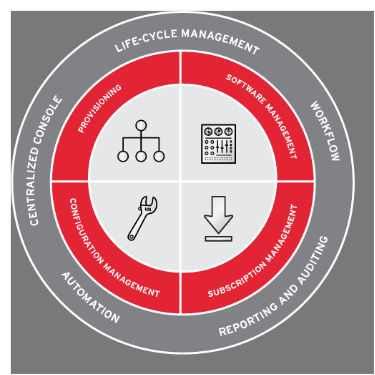Application Lifecycle Management (ALM), also known as ADLM (Application Development Life-cycle Management), refers to the ability to assimilate, harmonize and supervise the phases of software delivery procedures. From development to the deployment phase, ALM is a suite of integrated pre-identified processes and tools that embraces description, blueprint, development, scrutiny, consumption and managing. All through the ALM process, every step is intimately supervised and managed.

Benefits of SAP Application Lifecycle Management (ALM)
- Facilitation of business continuity as well as integration of new technological developments, reductions in risks/overall expenditure of operations, along with procurement of investments; are the core challenges that need to be tackled by organizations today. ALM efficiently handles these issues with an integrated and advanced ITIL-based approach;
- ALM offers methods, tools, services, and directorial systems to run SAP as well as non-SAP solutions, all through the lifecycle of an application;
- Instead of centering only on the individual phases, a SAP solution manager helps to get an overall extensive approach for more vigorous, scalable and result oriented solutions.
- According to ITIL, the application lifecycle consists of six phases:
- Requirements
- Design
- Build & Test
- Deploy
- Operate
- Optimize
The outcome of these various phases may be leveraged by the other phases, owing to the support offered by the SAP Solution Manager. This aids in realizing and executing IT solutions in rapid ways and operating them at lesser expenditure; thereby leading to profit deals.
Aspects of SAP Application Lifecycle Management (ALM)
ALM can be divided into three distinctive aspects namely, development, governance, and operations. It commences with an ‘idea’; is followed by ‘deployment’, and next when the application has no business value any longer, it reaches its ‘end of life’ phase and is detached from the service system.
Governance- It entails the different phases of judgment construction and venture administration and extends throughout the timeframe of an application.
Development- Ideally, the phase of crafting the application occurs between the phases of idea generation and consumption of the application. Yet, for maximum number of applications, the development phase re-emerges (at times numerous more times in the lifecycle of the application), either for upgradation or for entirely fresh editions.
Operations- In general, the effort necessary for organizing and handling the application commences a while prior to deployment, and subsequently runs constantly until the application is detached from service--at the end of its lifecycle.
Tools for ALM
Striking the correct combination of the three aspects of ALM, along with managing the challenges of each aspect individually, is an obscure task. The right tools can make this easier. There are several ALM tools existing for trailing application amendments. These range from committed ALM products that scrutinize an application from commencement to conclusion. In a nutshell, business worth can be capitalized with appropriate tool integration that helps manage the three aspects of ALM suitably.
Taking an extensive and holistic outlook of ALM is vital for improving decisive business processes.